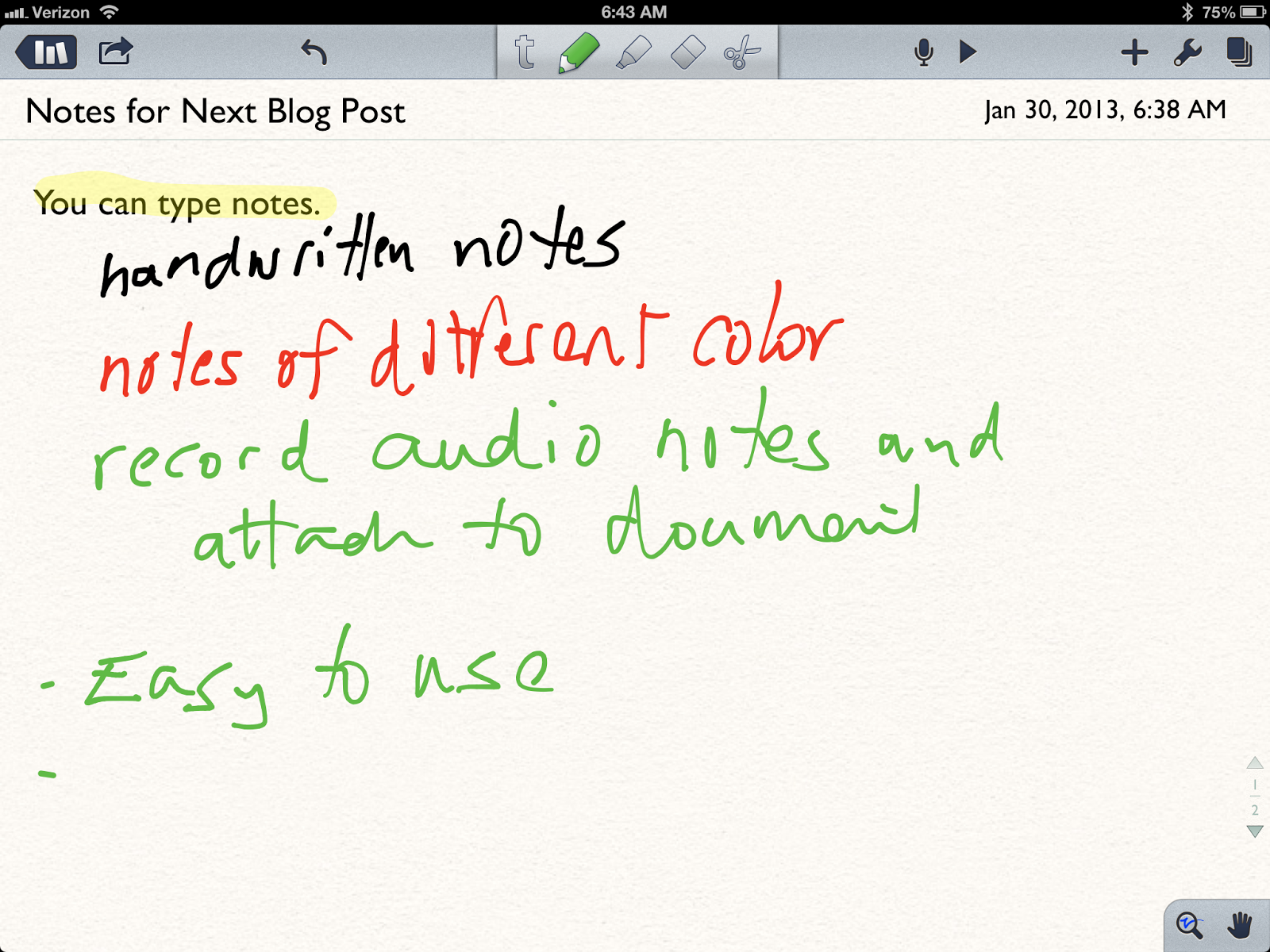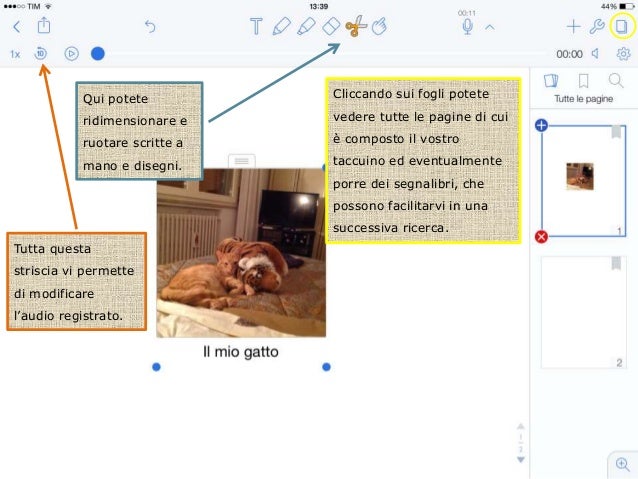

While Google’s web apps are built to work from the web, they still include some offline functionality to keep you going when your Internet calls it quits. Be aware that enabling offline use requires apps to download data directly to your local storage, and most Chromebooks pack precious little space, so you may need to shuffle some things around. That’s when you need apps that can work offline. Enable offline functionalityĪlthough society’s close to being oversaturated with Wi-Fi, there are still times when an Internet connection simply isn’t available. You can also adjust the functionality of Ctrl, Alt, Escape, and Backspace. Click that menu, select the functionality you’d like the Search key to have, click OK, and you’re all set. On the next screen, you’ll see a drop-down menu next to Search. Open settings again, choose Device in the left-hand rail, and then select Keyboard.
#NOTABILITY TUTORIAL HOW TO#
Personally, I like the search key as-is, but if you’d rather have Caps Lock functionality or set the key to serve as a backspace, here’s how to do it. To do this go to Settings > Appearance > Browser themes, and click the link icon (that square with an arrow) that will take you to the themes section in the Chrome Web Store. You can also add a browser theme to change the color scheme of Chrome on your laptop. If it doesn’t look quite right, choose between Center and Center Cropped in the upper right area of the pop-up window to adjust it. In a few seconds, your new wallpaper will appear. Next, select Set wallpaper, and a window will open where you can select some stock images that come with your Chromebook.Ĭhoosing a new wallpaper in Chrome OS 76.Īt the bottom of the left hand rail, click My images, and then choose from the available images. Once that’s done, tap an open spot on the desktop with two fingers to reveal the context menu. First, download the image you’d like to use, or copy it to your Chromebook via USB. This is an easy one, but it makes your desktop your own.
#NOTABILITY TUTORIAL WINDOWS#
Finally, to view all open windows on your desktop, swipe down with three fingers. You can also tap the touchpad with three fingers to open a link in a new tab. To switch between tabs, swipe left or right with three fingers. To scroll a page, move two fingers either upward or downward, as with other systems. You can also navigate forward and backward through the history of a browser tab by swiping two fingers to the left or right. We’ve already discussed that a two-finger tap reveals the context menu. Just like on other systems, this allows you to switch quickly among open windows. To do it, select the window you want to snap, then press Alt + ] to move the window to the right, or Alt + [ to the left.Īnother important keyboard shortcut is Alt + Tab. The first is the system’s “snap” feature, which fits an open window to half the size of the display. There are also some basic touchpad gesture controls and keyboard shortcuts that all Chrome OS users should know. If you don’t want a permanent switch, you can force these keys to become function keys on the fly by pressing Shift and your desired function key at the same time. If you’d rather have these keys behave as standard function keys go to Settings > Device > Keyboard, and turn on Treat top-row keys as function keys. Check out Google’s help pages to learn what all of these keys do. If you look at the top of the Chromebook keyboard where the function keys would be on a Windows PC, you’ll see shortcut keys for actions such as adjusting the volume, refreshing the browser tab, and switching between windows. We’ve already discussed the search key, but there are several other keys that you should get to know as well. If you want a desktop-like experience for the web app, check the box that says Open as window, and then click Create.

A small pop-up window appears asking you to confirm that you want to add the web app. Next, right-click the webpage tab-it looks like three vertical dots-and select More tools > Create shortcut…. The easiest way to add web apps is to open the site you want in the browser. IDGĪdding a website to the shelf in Chrome OS. To get rid of something, hover your mouse pointer over the app icon in question, tap the touchpad with two fingers (the equivalent of a right-click), and select Unpin from the context menu that appears. To make the Chromebook your own you’ll want to add your commonly used apps to the Shelf, and remove the ones you don’t use. The Chrome OS Shelf shows which apps are running and provides an easy way to launch apps. This area is called the Shelf, and it mimics the Windows taskbar. When you first open your Chromebook, you’ll see several app icons sitting at the bottom of the screen. This shortcut used to be Shift + Esc, but Google is phasing it out. Finally, to access your Chromebook’s task manager, click Search + Esc.


 0 kommentar(er)
0 kommentar(er)
